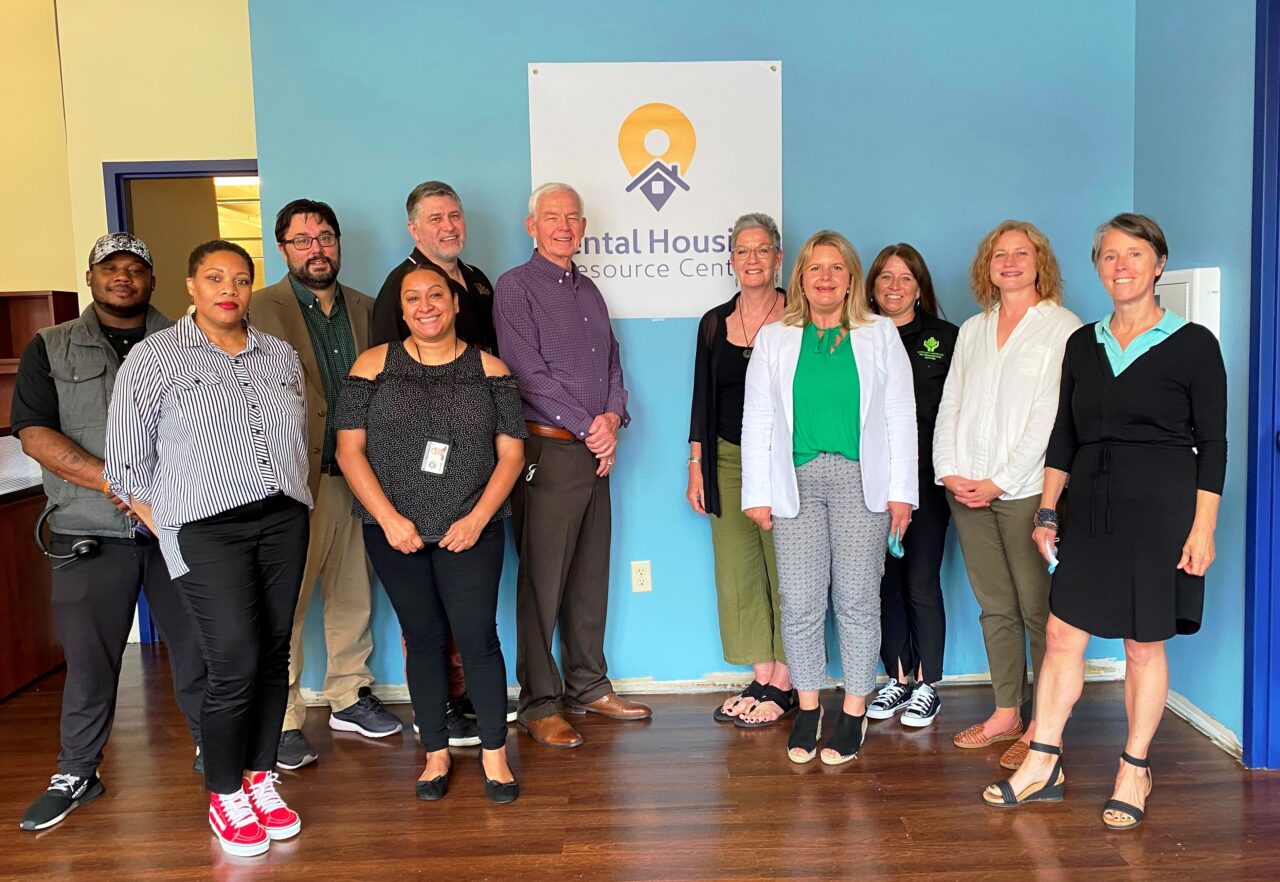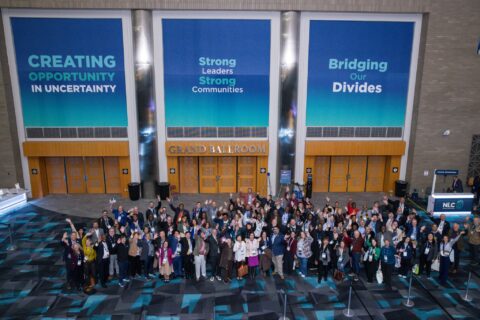When Matthew Desmond’s 2016 book “Evicted” spotlighted America’s eviction crisis through the lens of tenants in Milwaukee, Wisconsin, community stakeholders responded by organizing an Eviction Prevention Task Force. Their work led to the establishment of the city’s Rental Housing Resource Center, accessible to virtual and in-person visitors alike.
In 2018, Milwaukee city staff joined a local nonprofit housing services provider to convene stakeholder meetings and develop, for the first time, a shared vision and strategy for preventing evictions.
With the help of grant funding, the group now known as the Milwaukee Eviction Prevention Task Force produced a report and recommendations aiming “to create a framework for enhanced, cohesive services.”
Number one on their list of consensus items? “Creating a new tenant and landlord resource center.”
In March of 2021, that vision became reality when Milwaukee Rental Housing Resource Center went live online, providing a one-stop shop to help landlords and tenants alike avoid entering eviction proceedings.
The site uses a simple diagnostic survey to direct visitors toward eviction prevention resources that suit their needs. It also houses a resource library with plain language descriptions. On the front page, a banner offers to connect renters facing eviction with people who can help them prepare for court.

In addition to its online location, the center’s physical manifestation opened in the summer of 2021 in a “trauma-informed” space at Community Advocates, a Milwaukee services provider.
Deb Heffner, the group’s housing strategy director, said it was built around human-centered design principles, with soothing plants and color schemes, to charging ports embedded in chairs. There, people can use “Zoom Rooms” for virtual eviction hearings and computer kiosks to apply for rental assistance programs. A children’s play area is also available for families with kids in tow.
More than 3,500 households have used in-person visits and the website since December 2020. Yet another access point exists via a phone hotline that has fielded more than 20,000 calls related to eviction prevention services since March 2020, according to Kristi Luzar, the Executive Director at Urban Economic Development Association of Wisconsin, Inc. (UEDA).
Milwaukee hired UEDA to help implement the coalition’s 2018 report recommendations. Luzar said the resource center idea was inspired by a tenant-focused center in nearby Madison, but with a twist: Coalition members sought to improve communication with landlords as well.
“We wanted to create a space where both can come and access information and services,” Luzar said.
Building Stakeholder Support & Charting a Vision
The idea of a resource center serving both tenants and landlords emerged over the course of five 2018 stakeholder meetings, featuring input from a wide range of organizations. Landlord groups like the Apartment Association of Southeast Wisconsin joined forces with staff at the Milwaukee City Attorney’s Office, the State Public Defender’s Office and Legal Services Corporation-funded providers. In total, 35 groups participated, including agencies in the city and county government.
Based on the roundtables, the task force released a report outlining the scope of Milwaukee’s eviction problem. As Matthew Desmond’s award-winning book Evicted highlighted two years earlier, the local situation was dire: Milwaukee County landlords were evicting roughly 121 households each week, disproportionately impacting those led by Black women. In total, roughly 4.25 percent of Milwaukee city renters were evicted in 2016.
The report also identified service and activity gaps in the local eviction prevention service landscape. Based on those observations, the group suggested creating the resource center, as well as three other services: 1) Increased access to pre-eviction mediation, 2) legal representation and 3) financial assistance.
The resource center was prioritized because it could act as a vehicle for the other three recommendations. Funding came from a combination of private companies and nonprofits like United Way of Greater Milwaukee and Waukesha County; local community funders like LISC, Greater Milwaukee Foundation and the Zilber Family Foundation; the Wells Fargo Foundation; federal government block grants and a “PayItForward donation campaign” that raised $25,000.
Those resources were leveraged to create the website for less than $10,000 and cover operational costs of five staff, including a paralegal, a case manager, a physical greeter at the center, and two communications and triage specialists. Since launching the center’s operations in late 2020 and with the end of the federal eviction moratorium on August 26, 2021, the triage team continues to see increasing requests for help.
The effort seems to be making an impact: In 2020, 2.06 percent of renters were evicted, less than half the rate in 2016. Though rental assistance and the federal moratorium certainly played a role, having a shared strategy to combat evictions was critical for bridging the divide between landlord and tenants.
“As a result of the RHRC’s efforts, large Milwaukee-area landlords have agreed to use tools such as mediation services before filing for eviction and to coordinate with rent assistance providers to reduce their filings and coordinate planned moves,” Luzar said.
Five Lessons for Cities
For communities seeking to create similar resource centers or work plans to help prevent evictions, the Milwaukee center offers five key takeaways:
1. Find a neutral entity to convene stakeholder meetings.
UEDA does not provide any direct services to either tenants or landlords, andLuzar said that neutrality was key to its ability to build consensus. Rather than engage in the adversarial nature of eviction itself, UEDA focused on fostering communication and achieving key deliverables.
2. Seek feedback from a range of partners.
Heffner noted that, for Milwaukee, one of the most important perspectives has come from the group that runs the city food pantry. In June, the food pantry partnered with the Resource Center to discuss how food service providers can inform people about housing.
“That group actually had connections with landlords that we lacked,” Luzar said. “They provided really interesting feedback and ideas we wouldn’t have thought of.”
3. Find a balance between tenant and landlord advocates.
Milwaukee’s ongoing right to counsel movement can be a sore subject for some landlord associations. At the same time, Wisconsin has few tenant protections at the state level. To navigate these differences, the coalition members all agreed on a mission to increase services and support strategies that they knew would work for both parties, creating an emphasis on pre-filing interventions.
“You have to create spaces for tough conversations,” Luzar said. “Not everyone agrees all the time.”
4. Prioritize racial equity and involve community organizations.
One of the stark findings from Desmond’s research was the disproportionate impact eviction has on Black families, especially women. To spread awareness of the resource center and to effectively reach communities of color in particular, Milwaukee’s task force relied on partnerships with grassroots organizing groups.
“You need to work with these groups because people trust them,” Heffner said. “Some folks have already called other numbers… you have to think about their lived experience.”
5. Engage landlords in a meaningful way from the start.
It can be difficult to create models that serve both landlords and tenants, but Luzar said making the extra effort goes a long way toward establishing rapport. Landlords, especially those managing a small number of units, are a constituency that also faces challenges and financial hardships — especially during the pandemic.
“The relationship-building takes time,” she said. “These groups are often in court on opposite sides, but now the way they talk to each other is different because of this task force.”
Learn More
Milwaukee is a member of the Eviction Prevention Learning Lab operated by National League of Cities and the Stanford Legal Design Lab. Learn more about Milwaukee’s Rental Housing Resource Center.

About the Author:
RJ Vogt is a second year student at Stanford Law School and research assistant at the Stanford Legal Design Lab.










